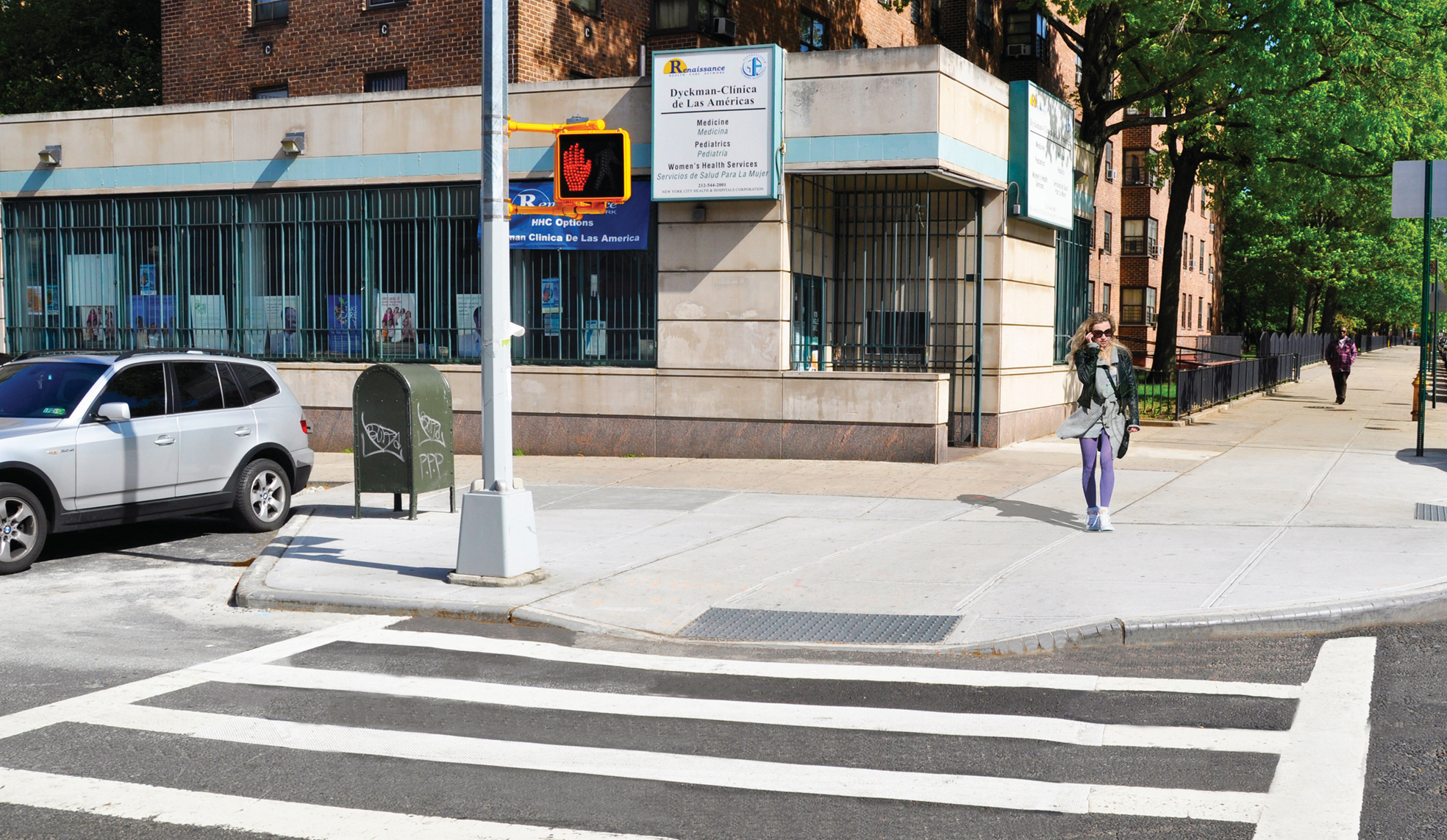
Corner radii directly impact vehicle turning speeds and pedestrian crossing distances. Minimizing the size of a corner radius is critical to creating compact intersections with safe turning speeds. While standard curb radii are 10–15 feet, many cities use corner radii as small as 2 feet. In urban settings, smaller corner radii are preferred and actual corner radii exceeding 15 feet should be the exception.
Discussion
The size of the corner relates directly to the length of the crosswalk. Longer crosswalks take more time to cross, increasing pedestrian exposure risk and diminishing safety.1
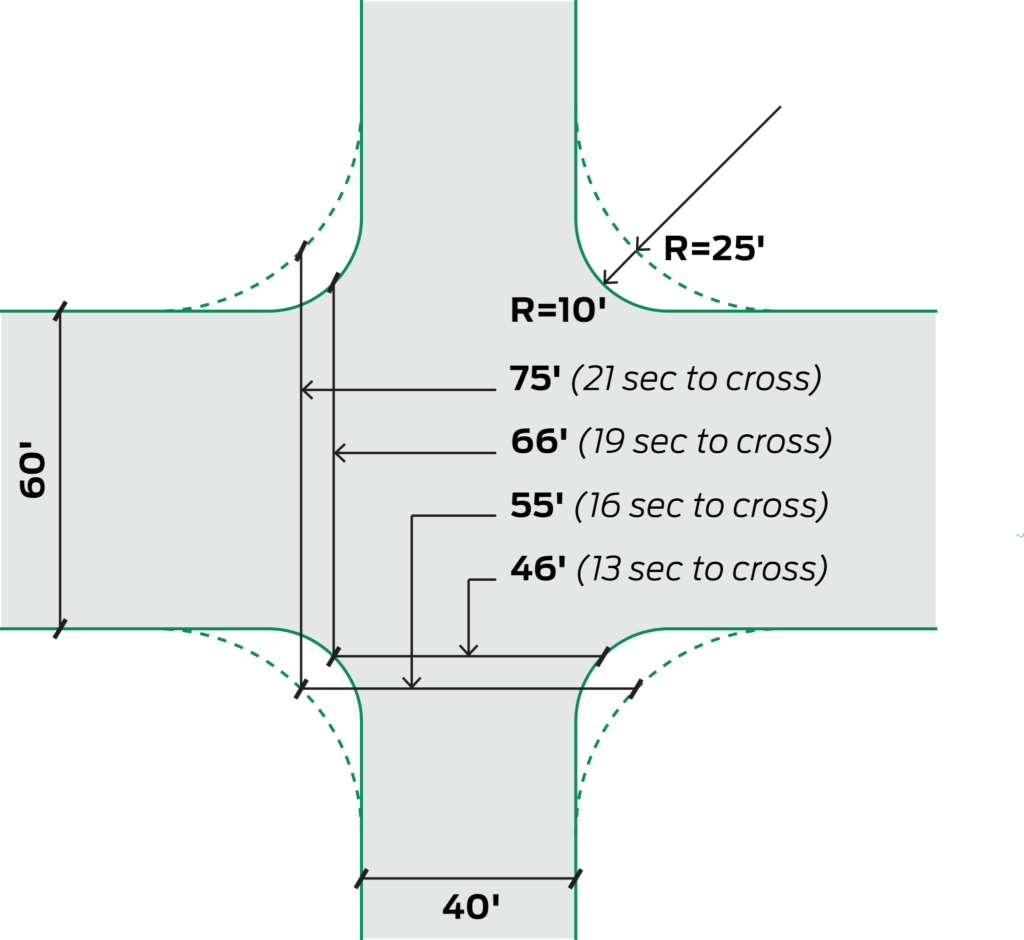
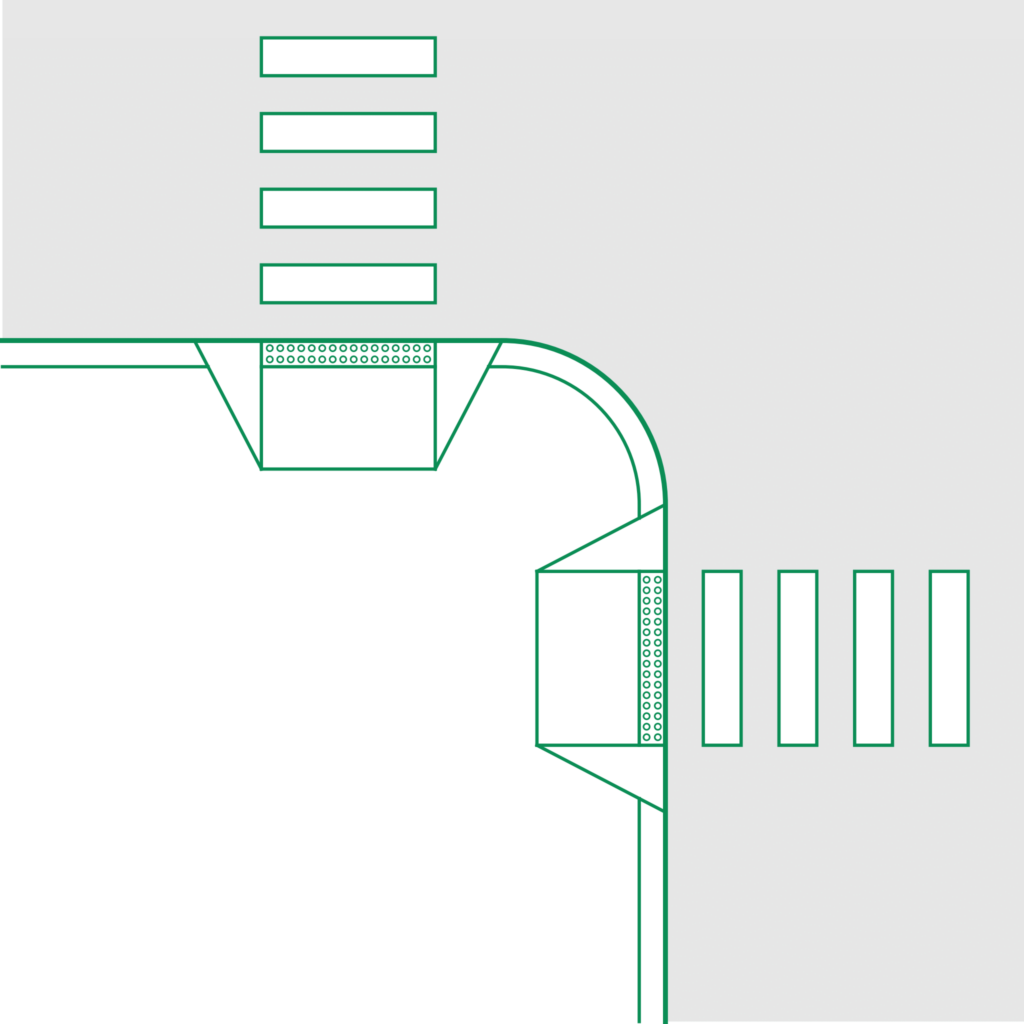
A smaller curb radius expands the pedestrian area, allowing for better pedestrian ramp alignment.
A large corner radius should not be used to facilitate a truck turning from the right lane into the right lane.2
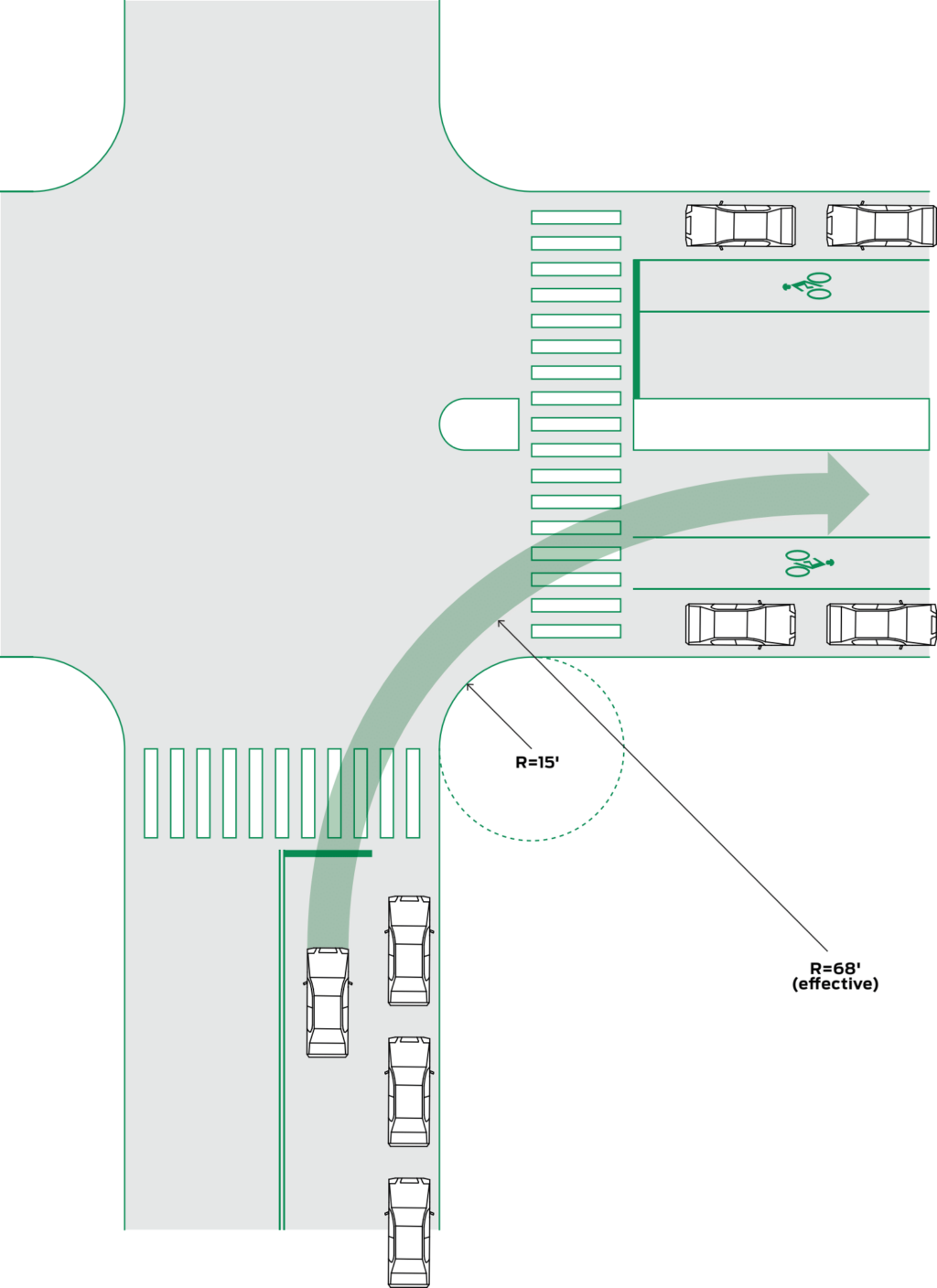
The distinction between the corner radius and the effective turning radius is crucial and often overlooked.
The corner radius may be a simple or a complex curve and depends primarily on the presence of on-street parking,
bike lanes, the number of travel lanes, medians, and traffic control devices.
Designers often determine corner radii based on the intersection geometry only and overlook the effective radius.
As a result, drivers making a turn on a green signal have little incentive to turn into the nearest receiving lane and
routinely turn as wide as possible to maintain travel speeds.
Recommended
Turning speeds should be limited to 15 mph or less. Minimizing turning speeds is crucial to pedestrian safety, as corners are where drivers are most likely to encounter pedestrians crossing in the crosswalk.3
Minimize effective turning radius where possible by employing one or more of the following techniques:
- Select the smallest possible design vehicle.
- Accommodate trucks and buses on designated truck and bus routes.
- Restrict right-turns-on red so there is no expectation of turning into the nearest receiving lane.
- Require larger vehicles to employ on roadway personnel to “spot” vehicles through difficult turns.4
- Design so that emergency vehicles may utilize the full area of the intersection for making turns.
Optional
In cases where the curb radius of a given intersection has resulted in an unwieldy or unsafe crossing distance, but where funding is not available to reconstruct the curb immediately, a city may delineate the appropriate curb radius using interim materials such as epoxied gravel, planters, and bollards. This should be a temporary option until funding becomes available for a more permanent treatment.5
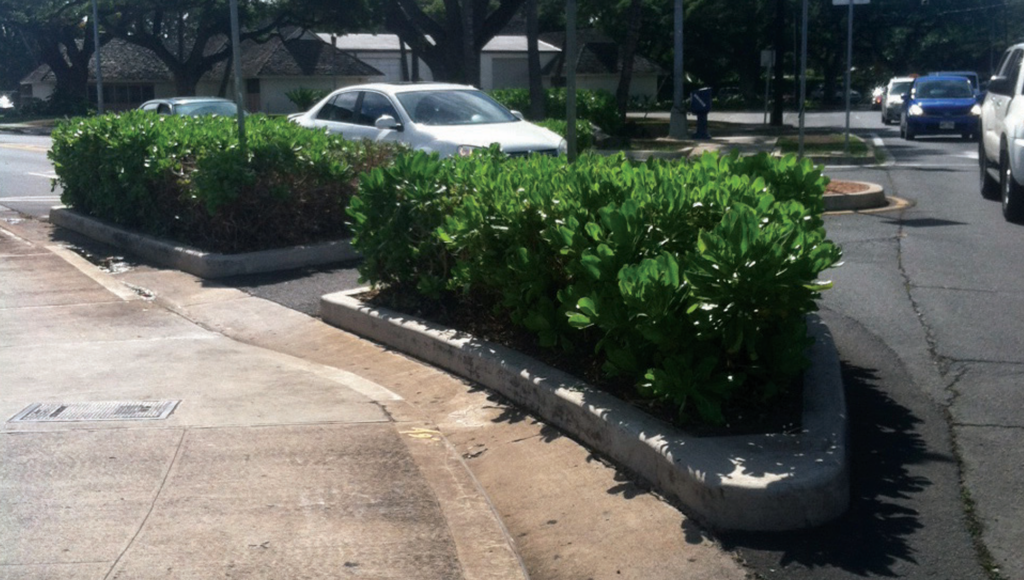
This landscaped island reduces corner and effective radii while
maintaining existing drainage and providing a cut through for pedestrians.
Various methods that accommodate large vehicles, while restricting the turning speed of smaller vehicles, may be used to avoid unnecessary widening of the intersection.

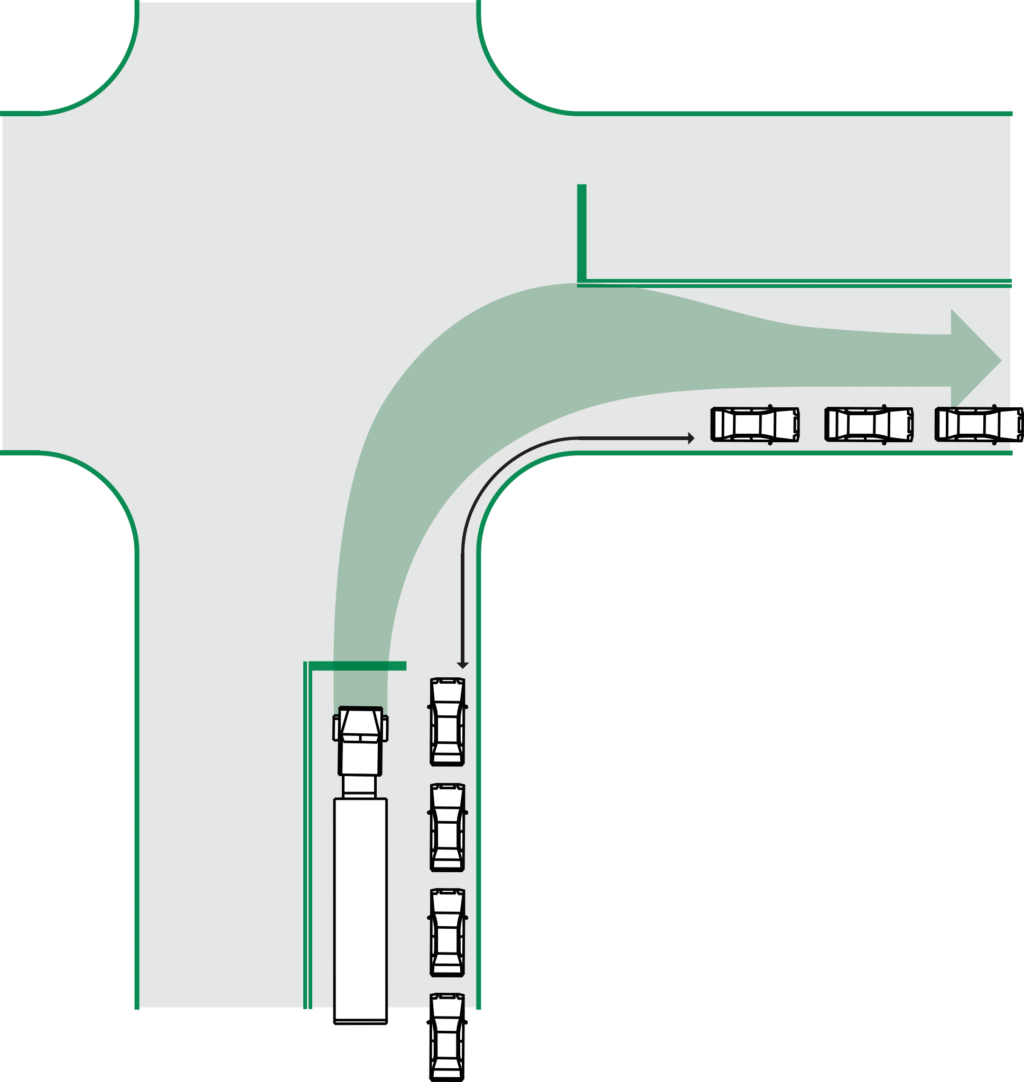
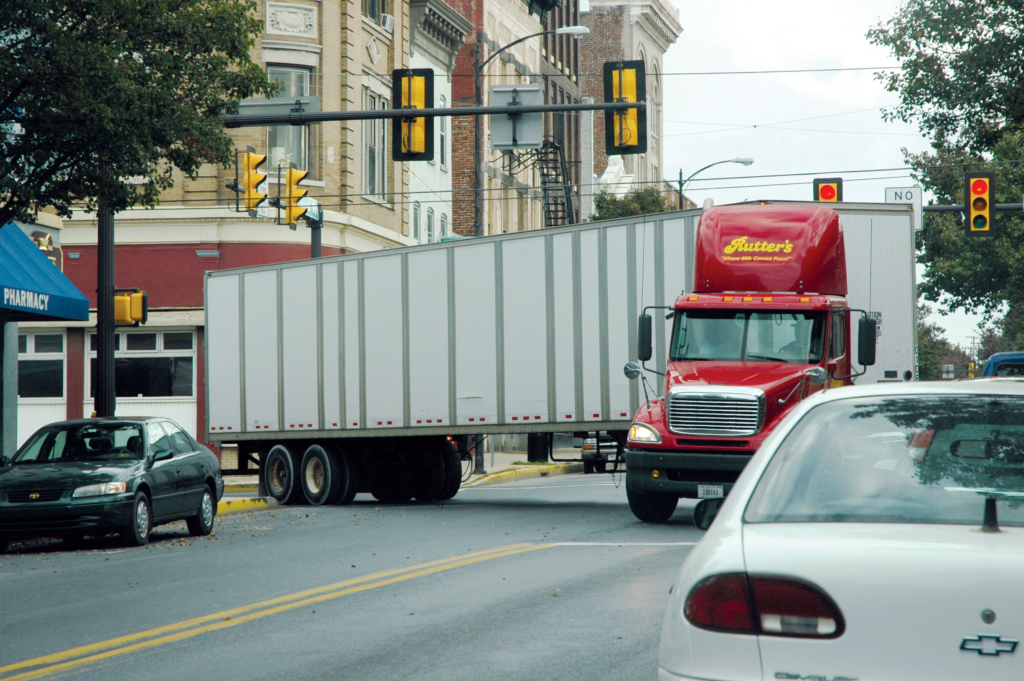
Narrower streets with curbside travel lanes may require larger corner radii because the effective turning radius mirrors the actual corner radius. The same holds true for streets with curb extensions. Streets should not be designed with larger corner radii in anticipation of the entire roadway being used for vehicle traffic at some point in the future.


- A literature review of the topic of curb radius and injury severity at intersections points out that “larger radii are less safe for bicycles and pedestrians because they allow for higher vehicle speeds through the turn and result in larger crossing distances.”
Kendra K. Levine, Curb Radius and Injury Severity at Intersections (Berkeley: Institute of Transportation Studies Library, 2012), 2. ↩︎ - Research has shown that large trucks will have “little impact” at most urban intersections, but some adverse operational effects should be expected at some intersections.
Joseph E. Hummer, Charles V. Zegeer, and Fred R. Hanscom, Effects of turns by larger trucks at urban intersections, (Charlotte, N.C.: Transportation Academy, Dept. of Geography and Earth Sciences, University of North Carolina at Charlotte, 1988). ↩︎ - Kay Fitzpatrick and William Schneider, Turn speeds and crashes within right-turn lanes, (College Station, Tex: Texas Transportation Institute, Texas A&M University System, 2005). ↩︎
- In infrequent instances where large vehicles need to make turning movements, personnel may be needed to direct traffic and “spot” the turning vehicle through a tight turning movement. ↩︎
- Roadway striping has been found to be a cost-effective temporary measure to help enforce traffic calming goals and modify driver behavior.
Robert Kahn and Allison Kahn Goedecke, “Roadway striping as a traffic calming option,” ITE Journal: 81 (September 2011). ↩︎ - American Association of State Highway and Transportation Officials. A Policy on Geometric Design of Highways and Streets. Washington D.C.: 2011; Formula 38. ↩︎